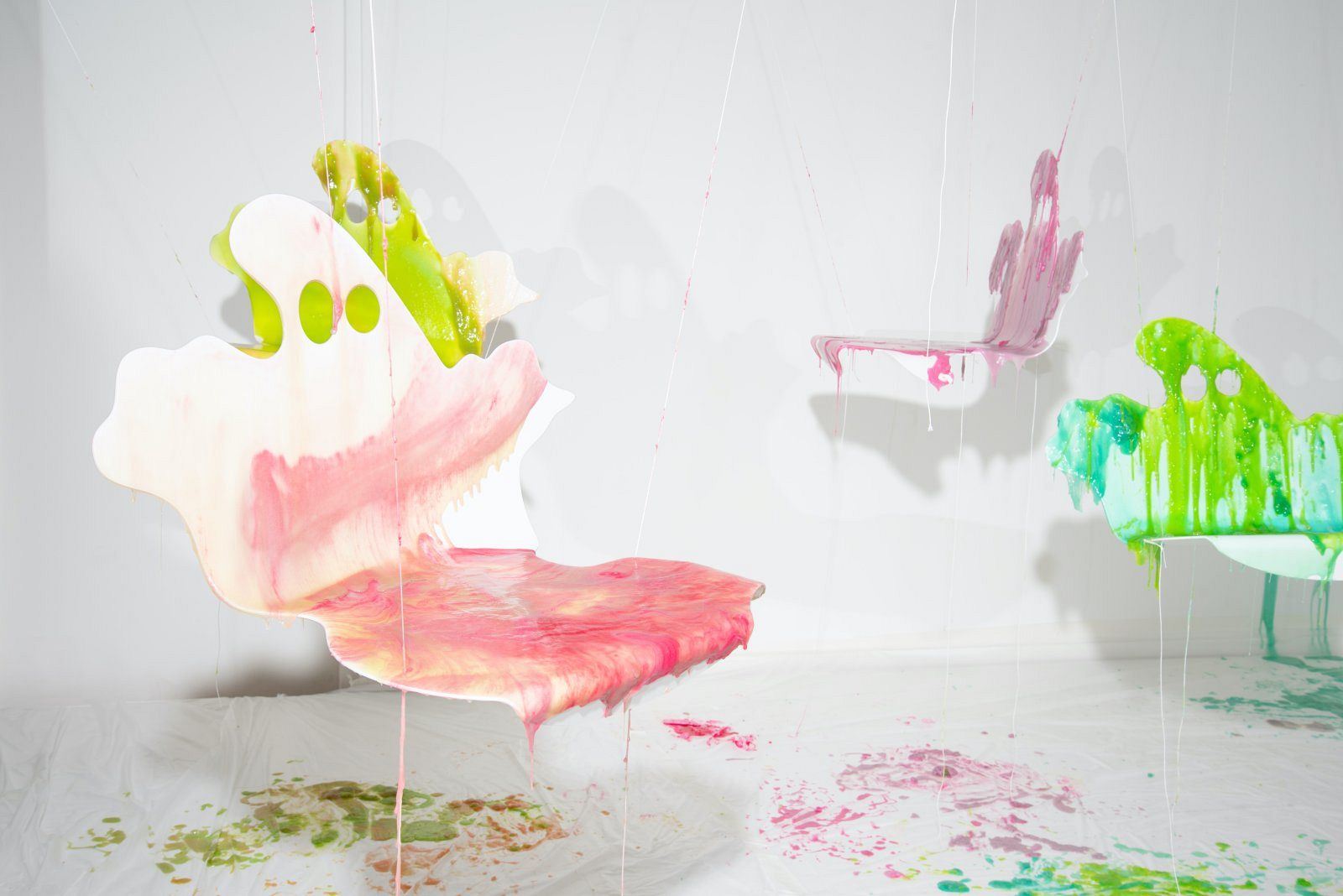
Marie Komatsu
Keywords: Furniture, Bioplastic, Mariekomatsu
Internship: Old Matter Studio
Marie Komatsu (1996, Tokyo) is a furniture and material designer specialized in bio-based plastic. The core of her material research lies in the aesthetics of candy and temptation, coined as “Candy-ism”, to redefine the generic term “bioplastic” and provide an arena of discussion beyond moral dualism within the topic of sustainability. Edible and non-edible, natural and artificial, toxic and harmless — Komatsu’s materials are a vessel of paradoxes, where the benevolent and malevolent coincides and amalgamates into one matter. The plastics serve as a skin if furniture were to be a body, sugar-coating the daily life while unravelling human instinct and laws of attraction.
SP00K
Graduation Project
SP00K is a series of seven chairs coated with self-made bio-based plastic, using food, beauty, and hygiene products to give the chairs their vivid colors and refreshing scents.
In December 2020, the number of human-made objects exceeded the total weight of biomass on the planet. 30 billion tonnes of material are being produced annually, and daily life is fueled with products that promise a better performance, whether it be beauty, health, endurance, sex, and pleasure. SP00K is a mirror of the contemporary consumerist culture, using ready-made products as raw material and sugar-coating the fear towards the ecological doomsday, while radiating with hope for a new material future where plastics are cherished and adored.
Cherry, strawberry, watermelon, green apple, lemonade, and eucalyptus, are names of the Koolaid flavors, shampoo, and detergents used to create the coating. Nature and artifice fuses heavily and drips down the curves of the seat, resulting in a frozen candy-coat around the SP00K. The coating is renewable upon damage by a remelting process, and each coat is poured by hand.
Materials: Powder-coated aluminum and steel, multiplex, bio-based plastic
SP00K comes in an edition of seven. Each coating is unique. For more info, please visit [www.mariekomatsu.com]
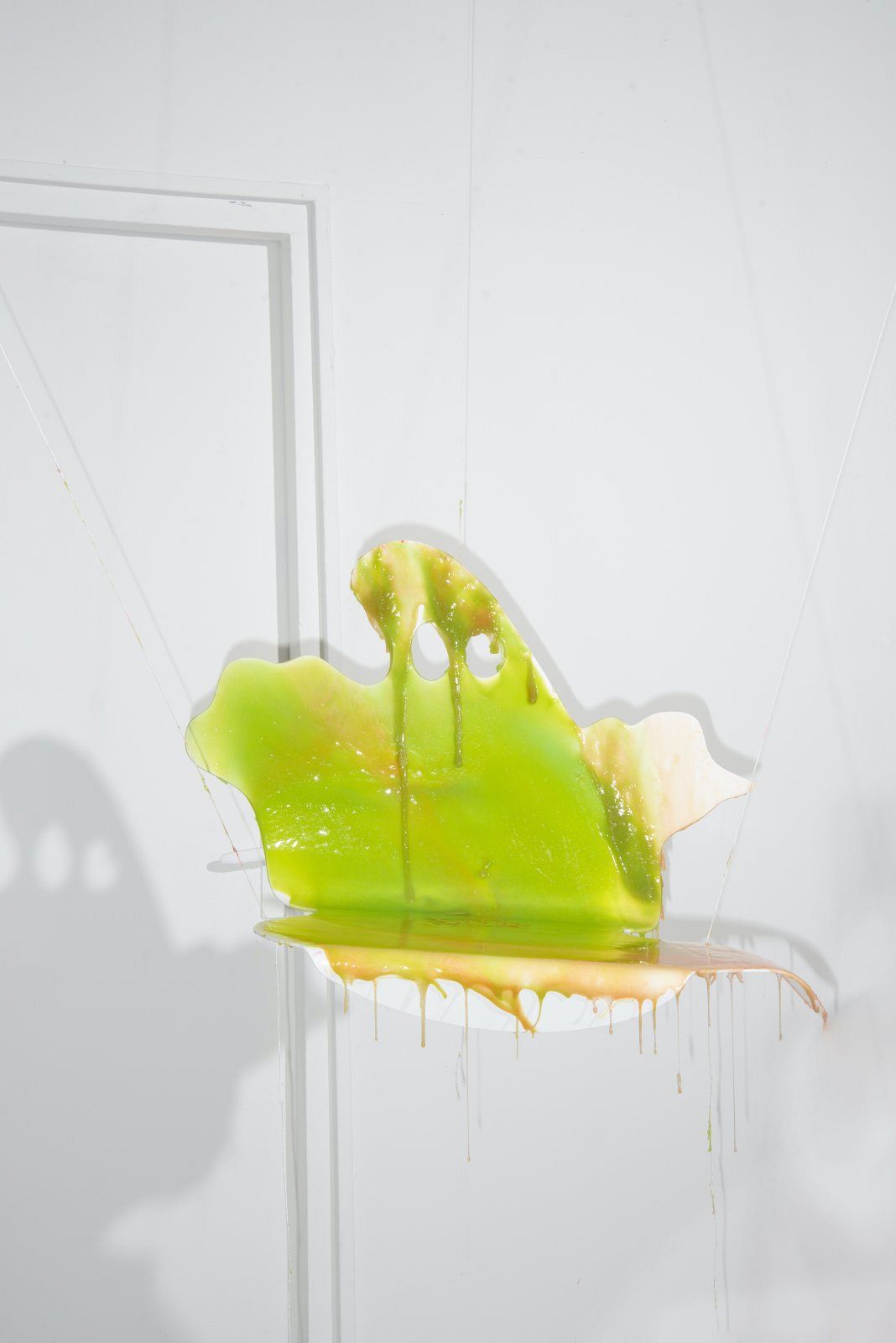
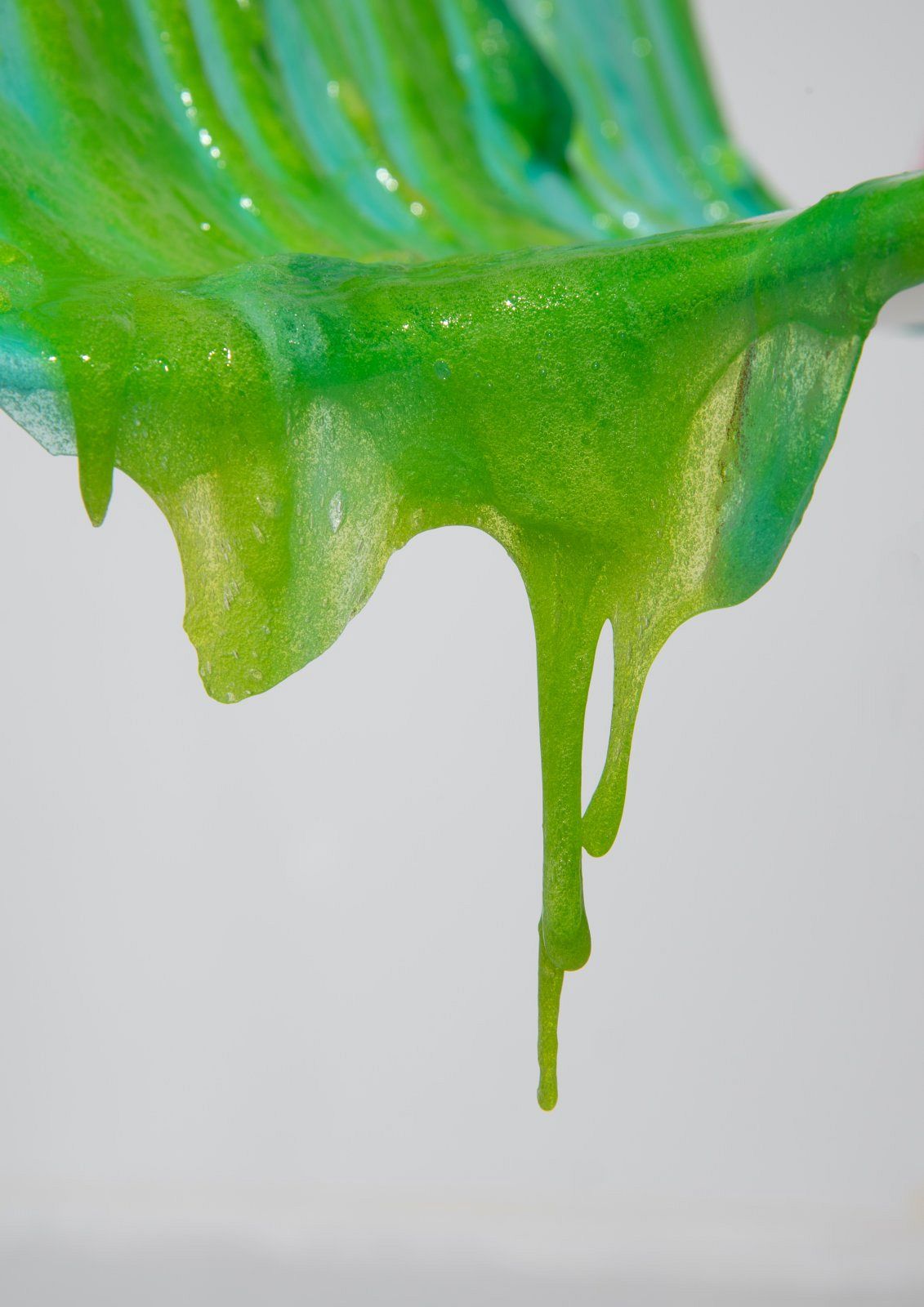

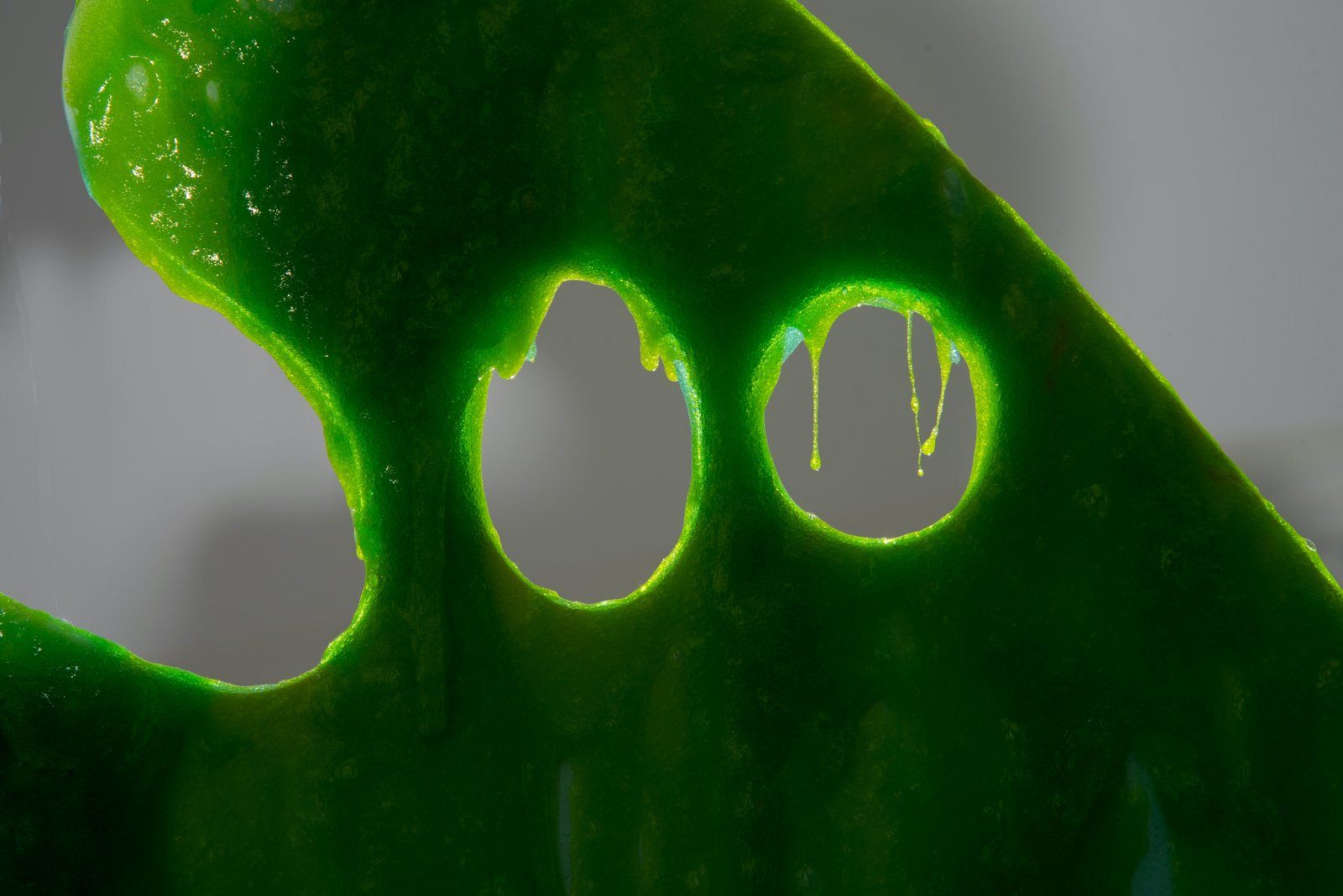
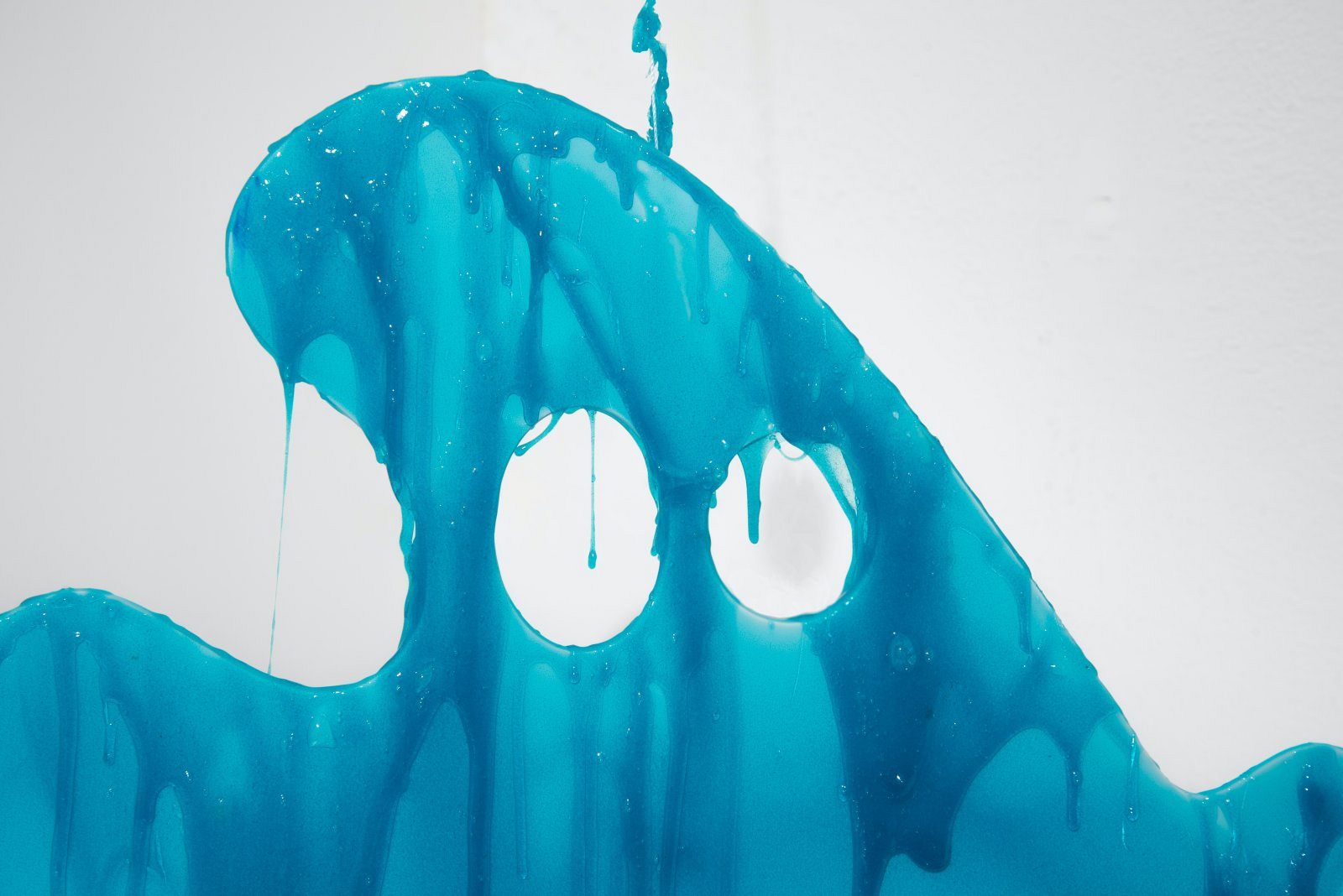
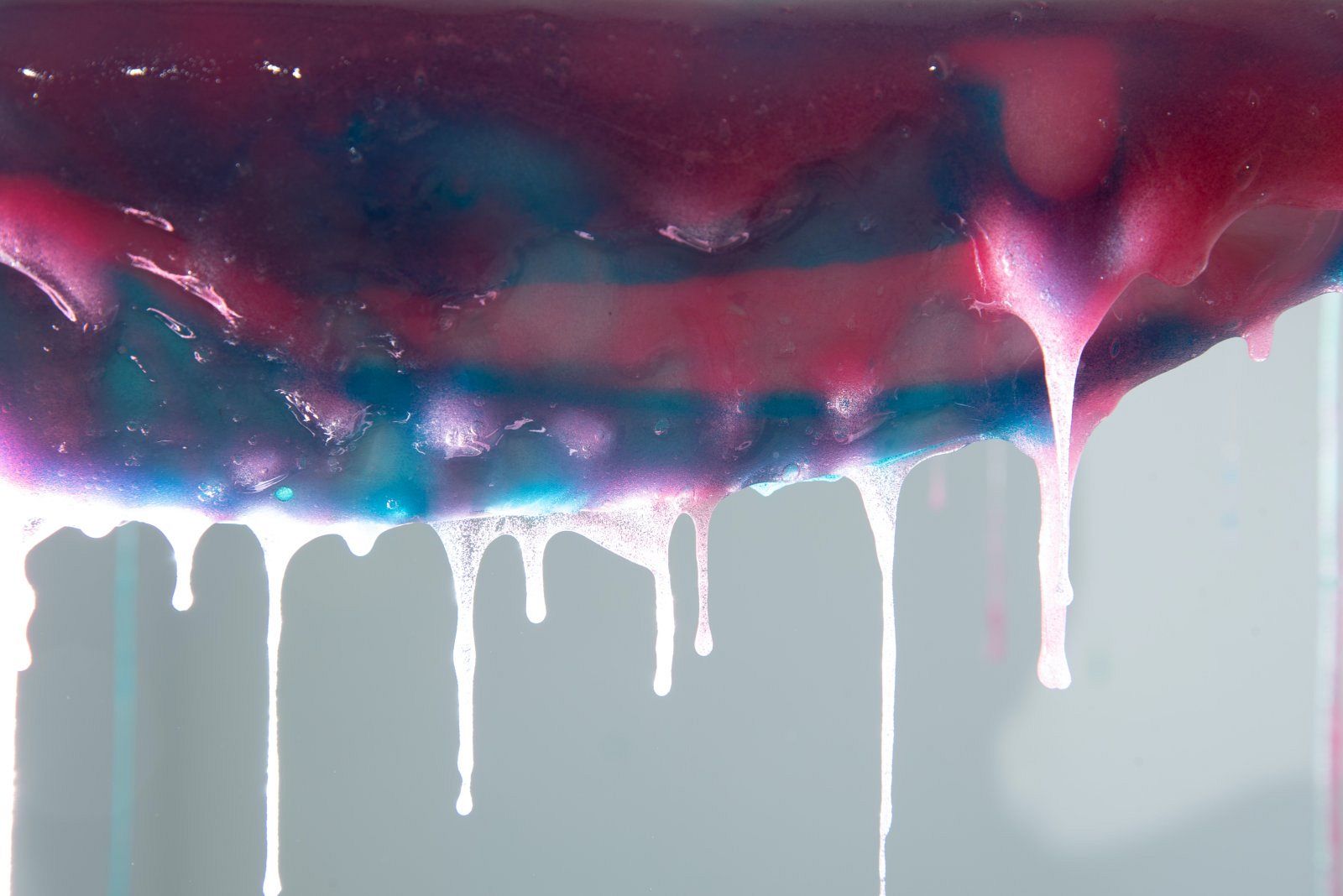
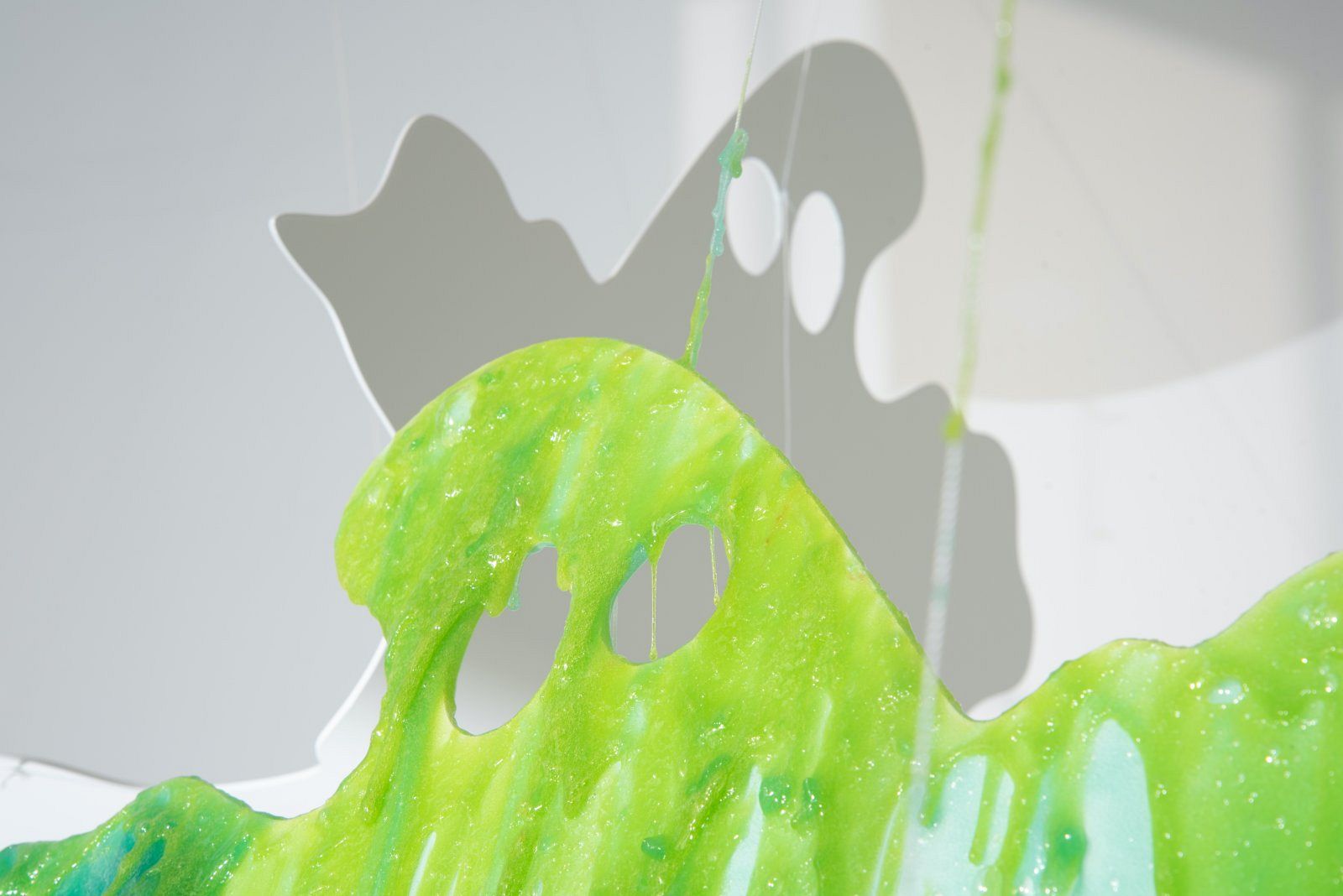
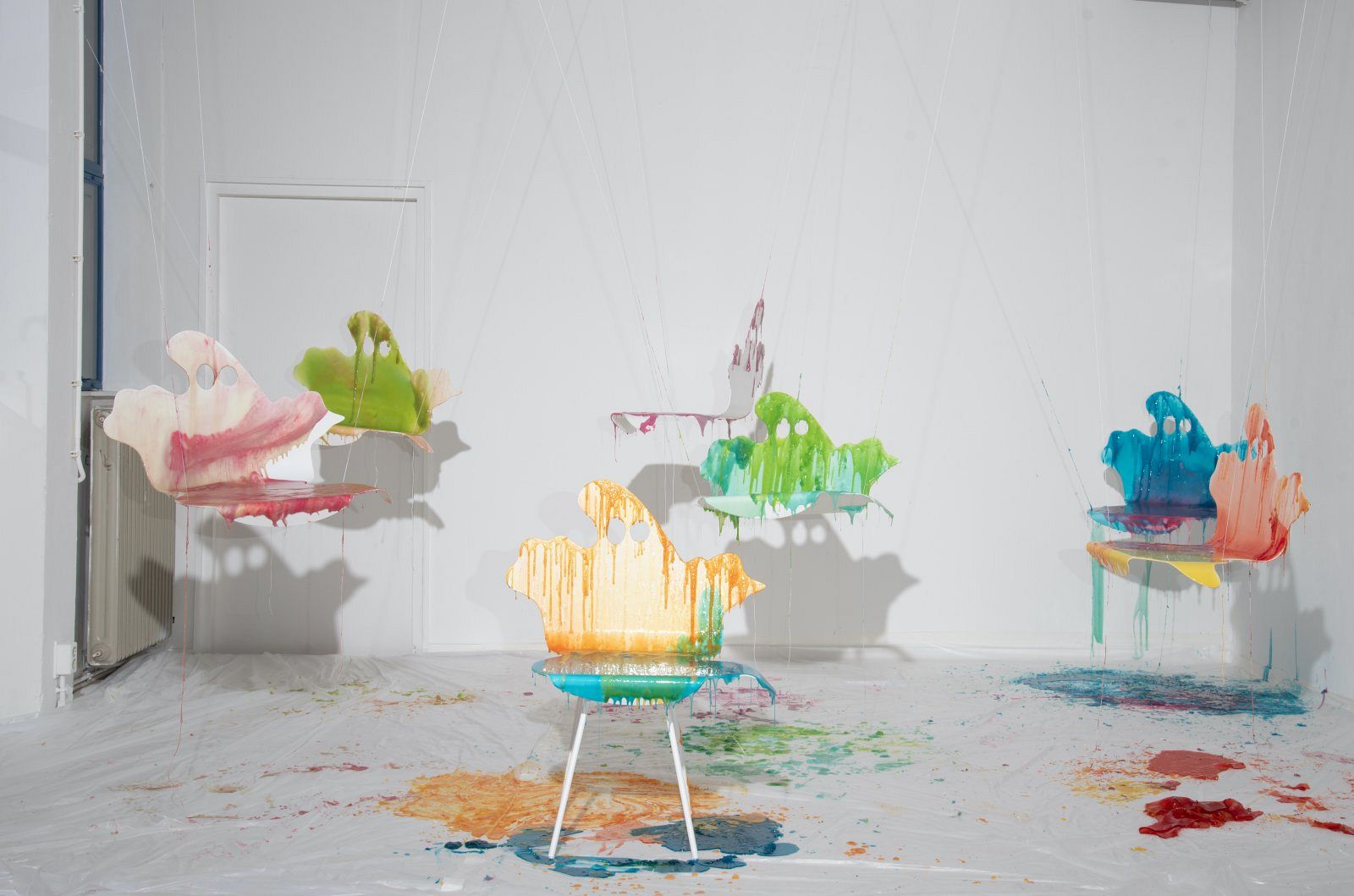
CANDY-ISM
Thesis
Candy is one of the first mass factory-produced foods since the industrial revolution. It comes in a wide variety of shapes, colors, sizes, and tastes, and it evokes sweetness, tastiness, juiciness, joy, excitement, as well as creating addiction and health risks from a young age throughout adulthood. Like the Pharmakon in the Derridian sense, meaning both “cure” and “poison”, candy is a paradox: an innocent drug. People “love” it, they want it, they want to brag about it— but what makes candy so special? Candy-ism is not an art nor design movement defined by a set time frame or group of people, but an aesthetic and language with an inherent universality, which renders itself based on the consumers’ political environment and lifestyles. Popular songs with reference to “candy” and “sugar” are both indicators and propagators of cultural shifts, such as the destigmatization of sex and drug use. Candy-ism is an aesthetic and language of desire that appropriates itself repeatedly, gradually changing context based on the ethos of the time. Candy-ism possesses the ability to sugar-coat expressions and objects, in both its literal and metaphorical meaning, and successfully preserves itself within the consumer society.
— excerpt from Candy-ism
full PDF available on [https://www.mariekomatsu.com/candy-ism]